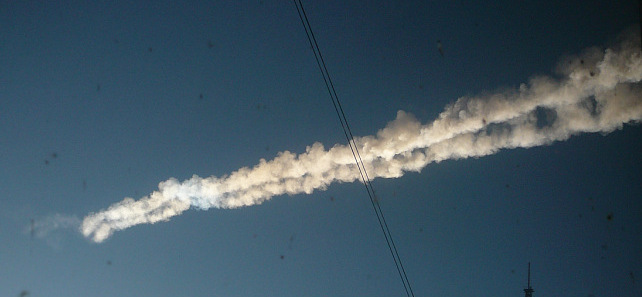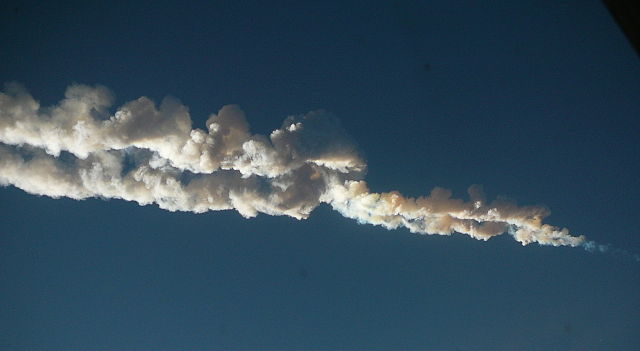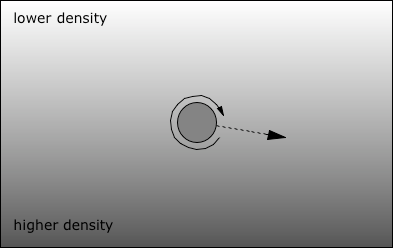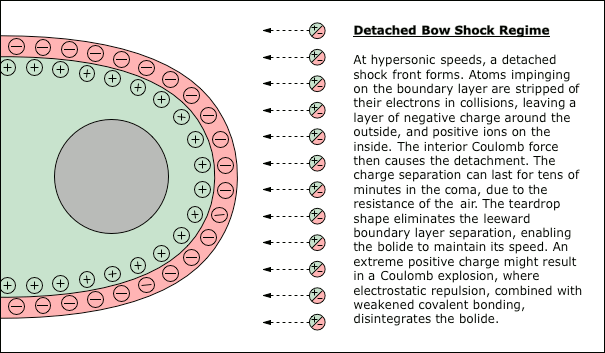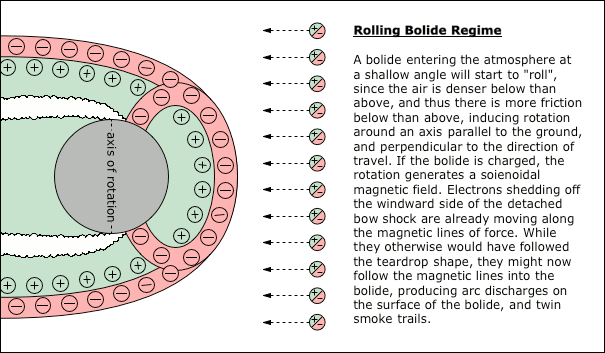Trails
© Charles ChandlerA recent event introduces a new form of data — the Chelyabinsk bolide left twin trails. The trails were relatively symmetrical, started simultaneously, and remained split even after a dramatic reduction in the size and spacing of the trails.This has never been observed before, so the topic is open to speculation. While two trails could have been caused by two fragments, they would not have both undergone the same dramatic reduction in size at the same time, nor would they have gotten closer together at precisely the same time. So this can only be evidence of one bolide that had some sort of bipolar process.One idea, which was posted to the Internet before this event, offers a possible explanation. A meteoroid entering the atmosphere at a shallow angle will start spinning, due to the density gradient in the air. (The air underneath is denser than the air overhead. See Figure 4.) The difference might be slight, especially for a meteoroid only 17 meters in diameter, and high in the atmosphere, where the density gradient isn't steep. But the detached bow shock is much larger, and if there is more friction on the bottom than on the top, the meteoroid will "roll" through the air, developing an angular velocity no greater than the meteoroid's overall velocity (i.e., 18 km/s for the Chelyabinsk bolide). If the meteoroid is charged, and if it is spinning, it's a dynamo, generating a solenoidal magnetic field. And just as the Earth's magnetic field deflects charged particles toward the poles, the meteoroid's far more powerful magnetic field might deflect charged particles toward its axis of rotation (parallel to the ground, and perpendicular to the direction of travel). This means that electrons, split off by the detached bow shock, and attracted to the positively charged bolide, might have been directed by the magnetic field into the bolide at the solenoidal poles.For the sake of clarity, the following diagrams illustrate the various constructs.The only model capable of producing twin smoke trails is the last one. The sudden appearance of smoke trails in Figure 2 would then indicate that the bolide had begun rolling as it entered the steeper density gradient in the lower atmosphere, and the angular velocity had achieved the threshold for a magnetic field strong enough to strip electrons out of the bow shock, which otherwise would have trailed away in the coma, but began to get directed into the bolide. Once the arc was struck by these electrons, smoke was produced. We can also note that the smoke trails waver up and down at a regular rate. Perhaps once the arcs were struck, their footpoints on the bolide remained the same, which might have been on the windward side of the bolide when they were first struck, but which moved to the back and then to the front again as the bolide rotated, leaving a smoke trail in a cycloid curve.












